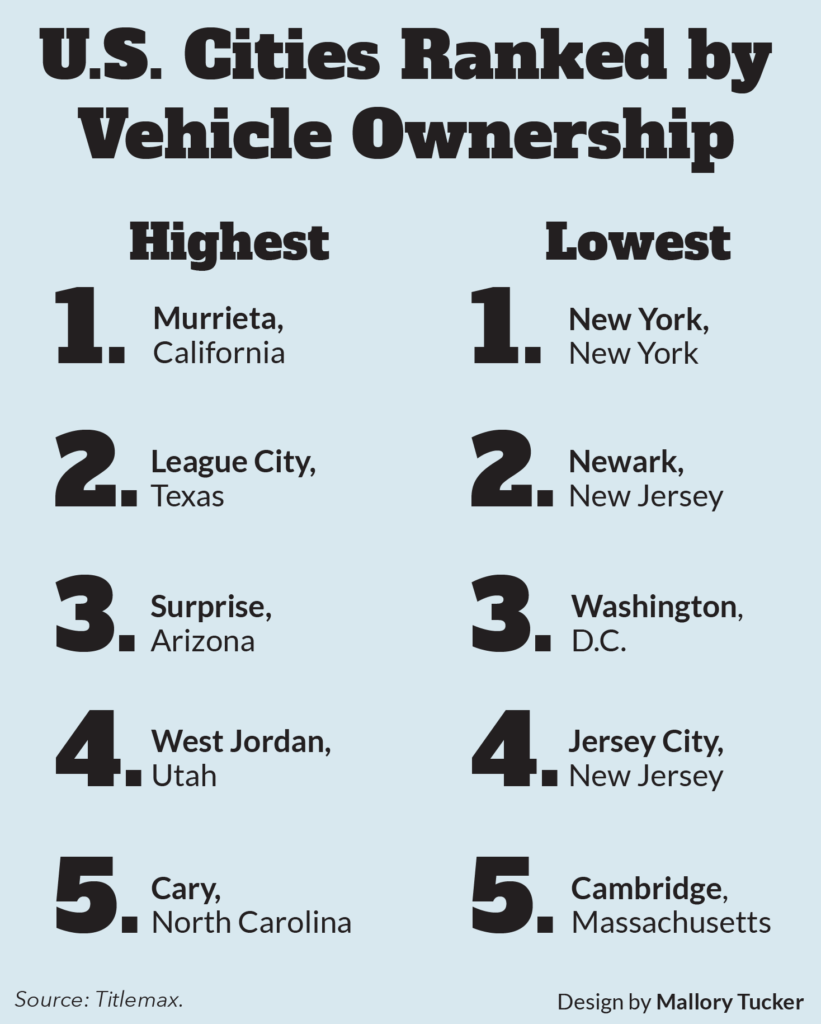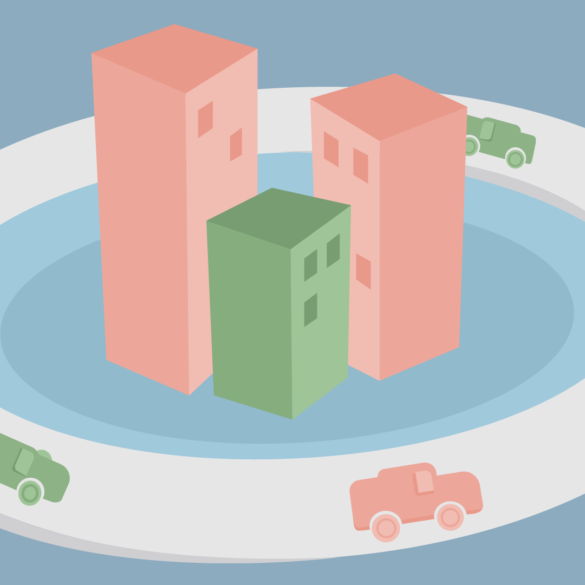The United States rides on the automobile industry. Whether it’s a gift for a 16-year-old who just received their license or a purchase worth a massive amount of savings, cars are one of the many products bought and sold in the U.S. economy.
According to the Montana Associated Technology Roundtables, car-centric planning is any type of urban planning and development benefiting those who own and primarily use private automobiles.
On the flipside, some individuals, such as those who don’t have access to private transportation, might struggle in a heavily car-centric environment.
Inside the Muncie Mission, a shelter serving many individuals with different situations, such as those without a home, employees consider the need for clients getting around Muncie and if transportation is a challenge for them.
Director of community engagement at Muncie Mission Leigh Edwards says many of the men residing within the shelter do not own a car. She also says there are people in the shelter who have a physical limitation lessening their ability to walk far, such as those with a walker or in a wheelchair.
Leigh believes it’s a significant impact for clients who do not own a vehicle to commute and a barrier to finding employment and going to appointments. She also mentions some clients might rely on the town’s local bus service, Muncie Indiana Transit System (MITS), which causes problems if they can’t commute to a job through the bus.
“You’re limited in the places you can apply by places that can be reached through the bus system and also for the hours of operation for the bus system,” Leigh says.
Last year, Muncie Mission started a free medical clinic inside the shelter operating two days a week to help those who would otherwise need to access healthcare elsewhere.
“One barrier to receiving good healthcare is transportation,” Leigh says. “In the fall of last year, we launched a completely free medical clinic that operates two days a week at the shelter. We both transport clients very regularly to appointments as well as offering medical care on site.”
Muncie Mission provides rides for clients while also supplying and purchasing bus passes for individuals needing to use public transportation.
“We take them where they need to go if they have some place they have to be,” Leigh says. “It depends on the situation. If we have a resident who needs to go to the Veterans Affairs Office, we will make arrangements to get them there.”
Whether through increasing parking spaces or building roads in public areas while excluding methods of pedestrian travel, numerous local and state communities in the U.S. convert their structures to benefit those with personally-owned vehicles.
Depending on factors, such as the population, availability of public transportation, the amount of sidewalks, and more, some cities and states are more car-centric than others. When it comes to Muncie, Indiana, the question of how car-centric the city is isn’t simple.

As Adam Leach, Muncie city engineer, describes, the specific location and area of the town varies in car-centricity. Leach says certain areas, such as Ball State University’s campus, downtown, and Old West End, have more transportation methods accommodating pedestrian travel. On the other hand, he adds the south and east sides of Muncie are car heavy, given they were designed that way decades ago.
While Leach says the city will add more sidewalks to connect areas in Muncie, he also credits MITS as effective for promoting public transportation.
“They go a lot of places, stopping where you want them to, which is not the norm for most public transportation systems,” Leach says.
He also mentions a lot of people ride bicycles and walk.
Currently, Muncie is focused more on repairing current roads than on building new ones. The process of determining which roads to focus on involves taking a yearly study of average daily traffic, considering the types of vehicles, and the number of people using them on roadways each day.
“You basically design the road based on the traffic, and you have some full projections if you think there’s going to be growth or if you don’t think there’s going to be growth,” Leach says. “Sometimes, you can size the road down or change the design.”
He states traffic counts are relatively steady right now but not large enough to upsize roads, which is why construction currently prioritizes fixing roads, along with the need for repairing maintenance and condition issues.
Leach also says areas with public places significant to citizens, such as hospitals, universities, and schools, tend to receive infrastructure improvements that accommodate travel methods beyond private automobile usage.
“If a person started here, could they get there? Is there something that both attracts or generates traffic?” Leach says. “[For] example, an industrial area, that might be designed more to accommodate heavy truck traffic and people commuting to work.”
Muncie’s Public Works Department is funded by the state’s Motor Vehicle Highway and Local Road and Street Account. But most Indiana cities also receive funding from them, so Leach confirms all these cities are “fishing in the same pot of money.”
As a result, they’re competing with other Indiana cities’ demands for funding projects. This presents a difficulty for the city to tend to the travel needs of both public and private commuters.
“We barely have money to do adequate maintenance,” Leach says.
In a town with infrastructure built 100 years ago as Leach says, the car-centricity of Muncie, while improved over time, still needs further work to accommodate non-private transportation methods.
Furthermore, one strategy to reduce Muncie’s car-centricity, as Ball State urban planning professor John West says, is by considering how to finish the construction projects already in the works.
“You’re just going to have too many streets to take care of,” West says. “It costs a lot of money to make complete streets, it costs a lot of money even to repave the streets that have potholes.”
He mentions Muncie’s decreasing population becomes even more of a problem when considering the increase in suburbs and peripheral areas.
“Muncie already has a network of built streets, and the places where new subdivisions, where new housing is going in is outside of our existing grid network,” West says. “Unless you do something to restrict growth outside of the city, you’re going to have more and more streets to take care of, and it’s going to be more costly to make those streets pedestrian friendly.”
It’s not just the convenience of private automobiles that’s an issue; it’s the limited alternative options the U.S. has in general.
“Whenever urban planners talk about reducing the car-centricness of a city, it’s rare that they talk about telling people not to drive cars,” West says. “The idea is that you want to expand other kinds of opportunities and make those other ways of getting around as easy as driving a car.”
Above all, for Muncie specifically, West believes it’s vital for the city to focus on transportation development in areas already containing infrastructure to reduce car-centric planning.
“Instead of subsidizing or allowing development in a cornfield, we should be subsidizing and encouraging development in a poor downtown area in The Village,” West says.
For Muncie, focusing on developing existing roads and other pathways is the city’s main priority.
Sources: TitleMax, IN.gov, Montana Associated Technology Roundtables




